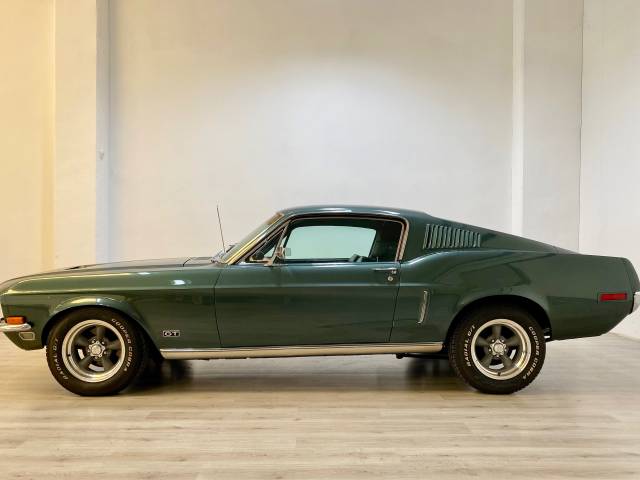
The '70 Barracuda was a huge success when it first came out. The Barracuda featured flowing-curves styling. It also ditched the Valiant heritage and sat on an E body platform. The new model was larger and wider than its predecessor, but it was still priced well below its predecessor. This article will focus on the changes in styling and engine options.
Chrysler's first use of flowing-curves style
Although the Cuda is a rare muscle car, it's more than just any muscle car. This supercharged, dual-turbocharged V8 is the first time Chrysler has used flowing-curves styling. It's also an example of Ford's understanding of the needs of people with disabilities. The cuda's interior combines form and function, as well as push-button services. Its leather-clad electric seats are borrowed from BMW convertibles, and they allow Matt to slide into the driver's seat from a wheelchair without any assistance.

The Barracuda car was designed by Plymouth Chief Stylist Dick McAdam. It was the first car with this style, which featured a fastback roof attached to a Valiant. It became a popular model and eventually became its own product line. However, the Barracuda car wasn't a fastback, but it did feature a classic '70s style.
Its styling has been changed
The Barracuda car's styling changed significantly from its predecessor in 1966. Redesigned front and rear ends were made, and the hood was redesigned with model-specific sheetmet. It was built on the same platform as Valiant but had a longer and wider body. Side glass and hood were both redesigned, as was the grille. It now shares the same strong grid motif of the Valiant.
The Chrysler A-body was the basis of the first Barracuda generation. It was a two-door fastback. It was made to appeal to young males and was a sportier variant of the Valiant. It could also function as a family car. It became one the most popular and sought-after American cars throughout its existence. However, it didn't always look that way.
Its price
The Plymouth Barracuda was the first to introduce the pony car into the auto industry. It was first made available in 1964 and quickly became the first pony vehicle. Ford Mustang followed a few more weeks. After it was found too similar to Valiant, the Barracuda was originally set for scrap. It was also the first pony-car to come from a company of poor financial standing.

The Dodge Barracuda can compete with the Chevy Camaro (and the Ford Mustang). Both vehicles have powerful engines and start at $27,000. The Mustang and Camaro each have a 2.4 liter engine with more than 300 horsepower. The Barracuda will be available starting at $25,000.
FAQ
What's the difference between a mechanic and an automotive technician?
The two are similar but not identical. The mechanic fixes cars while the technician maintains them.
A mechanic must be skilled in manual dexterity and able to complete simple tasks quickly. A mechanic should also be able accurately diagnose and repair problems.
An automotive technician needs to be more technically skilled than a mechanic. They must be able to read blueprints and use tools such as drills and wrenches.
They must also be able to carry out complex procedures safely. They must also be familiar with different types of engines and electrical systems.
They must also be capable of understanding how parts interact.
The result is that a mechanic often earns less than an auto technician. There are many job opportunities in both.
How do I fix my car for a hobby?
You might be interested in cars as a hobby. You could learn how to repair them, buy parts for them, sell them or just enjoy them. It's a fun hobby that you can do if it interests you.
It isn't easy to turn it into a full time job. It takes dedication and hardwork. You'll also need to invest a lot.
If you don't have any good reasons to be involved in cars, it may be better to just let it go.
What are the basics of car mechanics?
For an auto mechanic job, you don’t have to be an expert in cars. The only thing you need is the ability to fix them. It's why many people begin to fix things by fitting brake pads or changing tires.
You'll need to know how to read diagrams, understand written instructions and follow basic rules of good practice. You will also need to understand how parts should be replaced or repaired.
You should not attempt to fix vehicles without proper training and guidance. This is especially true if you deal with expensive components such as engines or transmissions.
Although you won't be required to know much about cars you should have a solid understanding of the fundamentals and principles of mechanical engineering. This means understanding the principles behind how engines work and how brakes function.
You should also be ready to handle all kinds of situations. For example, you may find yourself working on a vehicle that has been involved in a serious accident. Also, you'll need to be familiar with dealing with accidents or breakdowns.
You must also be willing to learn quickly. In order to be able diagnose and fix problems, you will also need to know how to do simple maintenance tasks such tightening bolts.
Statistics
- According to the BLS, total auto technician employment is expected to exceed 705,000 by 2030. (uti.edu)
- 52% of Mechanics in the United States think their salaries are enough for the cost of living in their area. (indeed.com)
- There were 749,900 jobs available for automotive service technicians and mechanics in 2016, which is expected to grow by six percent through 2026. (jobhero.com)
External Links
How To
How to be an Automotive Technician
Automotive technicians provide repair and maintenance services to vehicles. He/she works at car dealerships, auto shops, garages, service centers, etc. He/she assists customers in fixing their cars, trucks or motorcycles. An automotive technician must be able to diagnose problems and make repairs quickly, safely, accurately, and efficiently.
If you want to be an automotive technician, you need an associate degree from vocational school. After completing the program, he/she must take the National Institute for Automotive Service Excellence certification exam. ASE stands to American Society of Mechanical Engineers. There are two parts to the ASE certification exam. The first section tests for mechanical knowledge, the second for practical skills. To pass the test, you will need to visit an authorized testing location. These locations can be found online or at your local auto dealer.
After passing the test, a candidate must pass a state examination before becoming licensed as an automotive technician. This process varies depending on where the applicant lives. Some states require candidates to complete a training program, while others let them study on their own. Some states allow technicians to become licensed right away after receiving their license. While others wait until they have had at least six years of experience as an automotive technician.
To get started as an automotive technician, a person should apply to a local automotive dealership. New employees are usually apprentices when they first get hired. Apprenticeships last for three years. The apprenticeship program teaches students how to change oil, adjust brakes, replace tires, clean spark plugs, inspect engine compartments, and perform routine maintenance. Some students are able to perform more advanced repairs such as replacing shocks and installing air filters. Most schools offer classes during regular business hours. Some schools also offer evening classes when needed.
Once a student completes his/her apprenticeship, he/she becomes a journeyman. Journeymen can spend up to five years learning how major systems work, including transmissions, differentials. They also learn how to adjust steering gear and suspensions. They learn how to do complex repairs such as remanufacturing engines, rebuilding transmissives, and troubleshooting electronic components. Because they have a good understanding of the job and what customers expect, many employers prefer to hire journeymen.
A candidate who passes all the necessary exams and gets a license might be interested in opening his/her own business. According to Bureau of Labor Statistics, there were almost 1.7 million available jobs in the automotive mechanic field in 2010. That number was expected to grow by 18 percent from 2009 to 2020. Candidates who decide to open their own business should be prepared to invest thousands in equipment and supplies.
Automotive technicians' salaries depend on many factors such as the employer, whereabouts, education level and experience. On average, a jobless person could expect to earn $20,000 annually. Someone who has only a highschool diploma could earn around 21,000 dollars per year. Those with an associate's degree earned approximately $24,000 per year. Technicians with bachelor's degrees earn approximately $27,000 per year. Master's degree holders make around $32,000 annually. Salary increases are common, so a professional who earns less than $30,000 now could reasonably expect to earn $40,000 or more in just a few years.